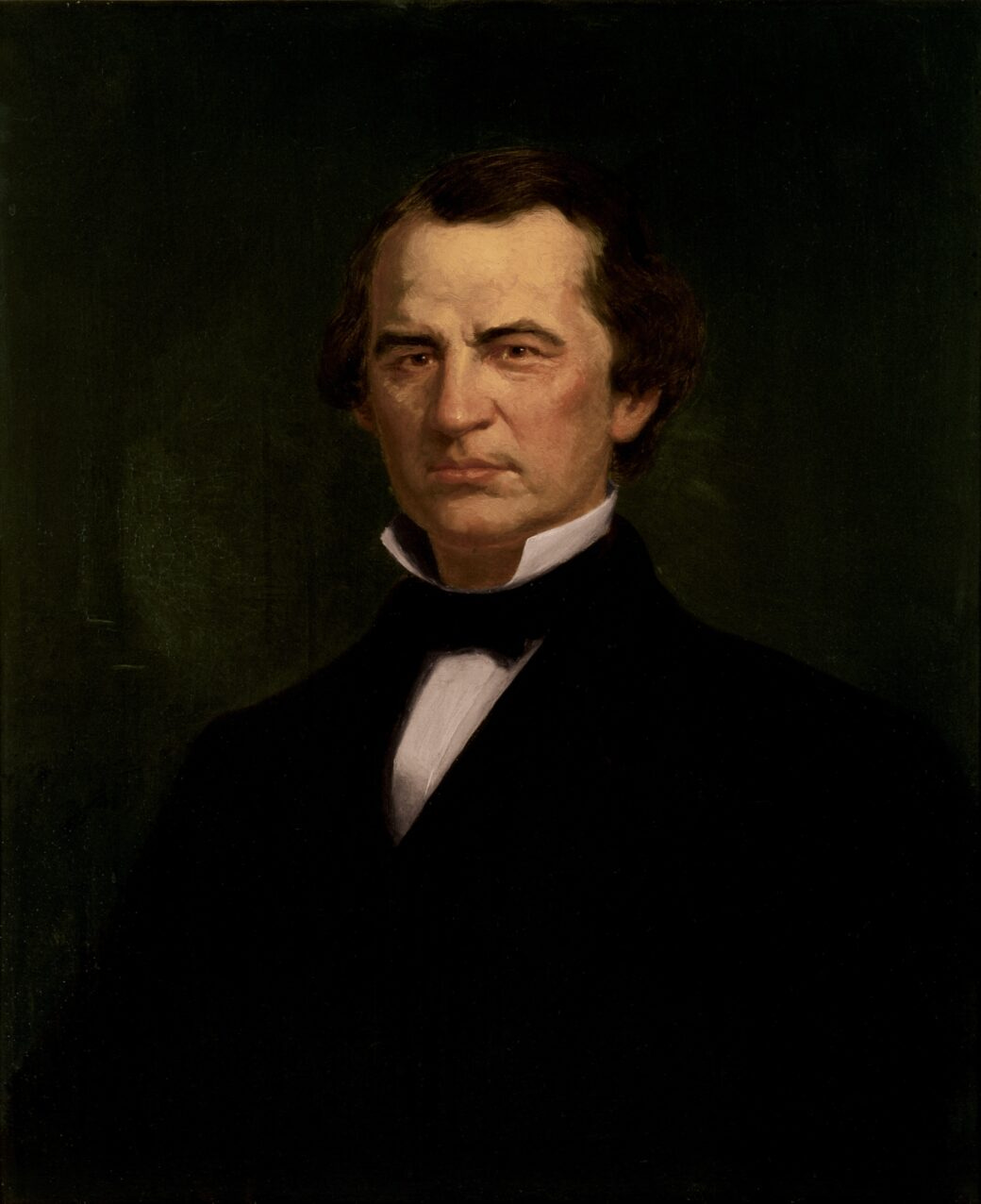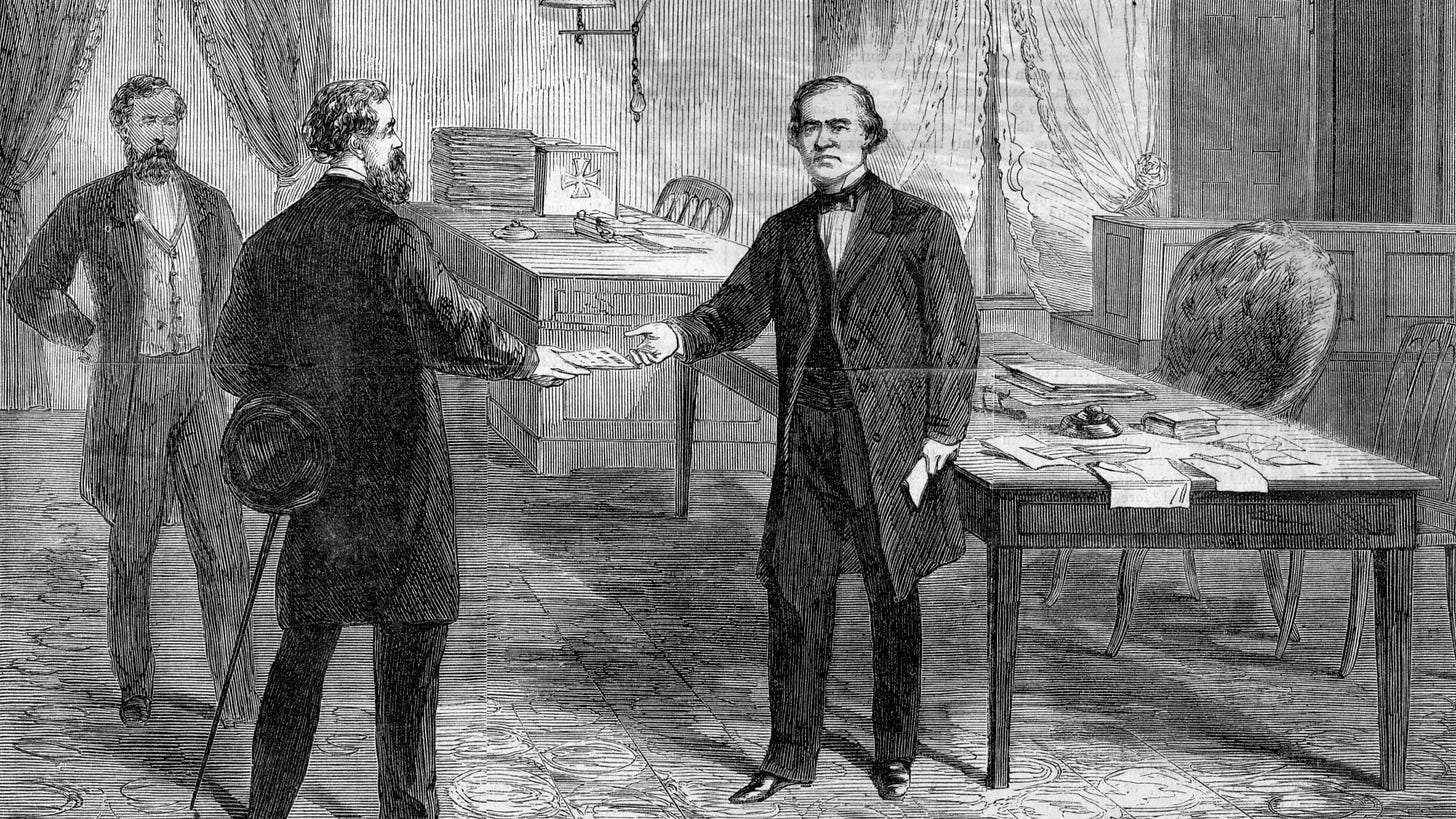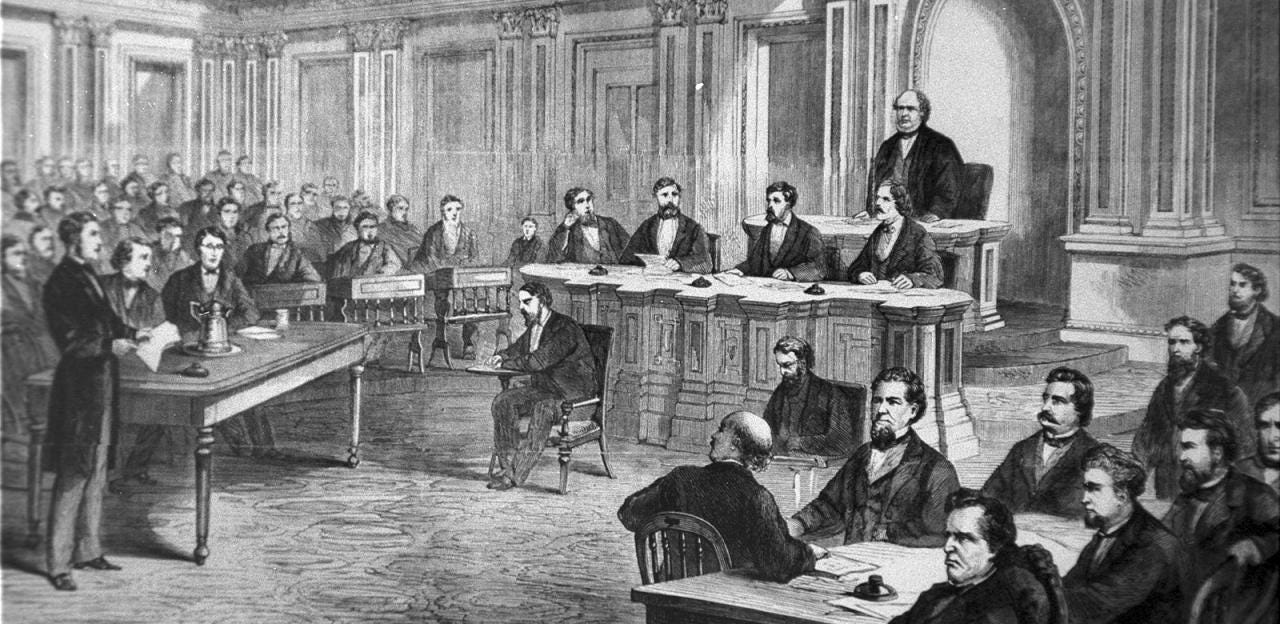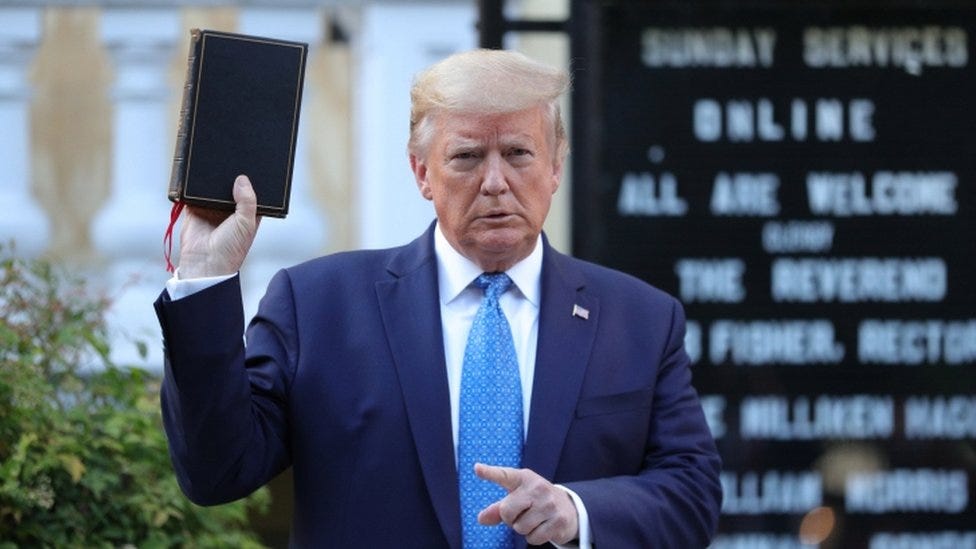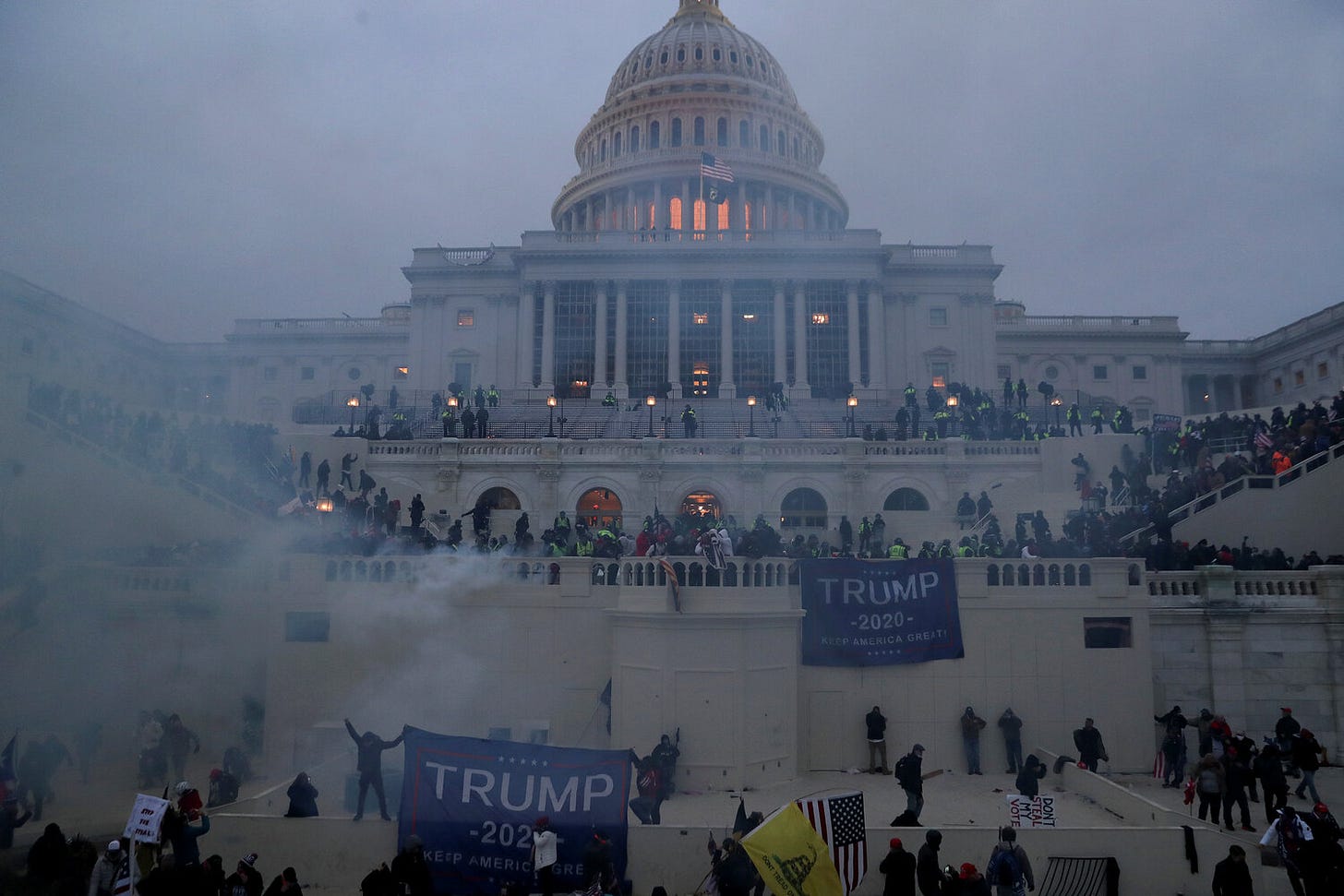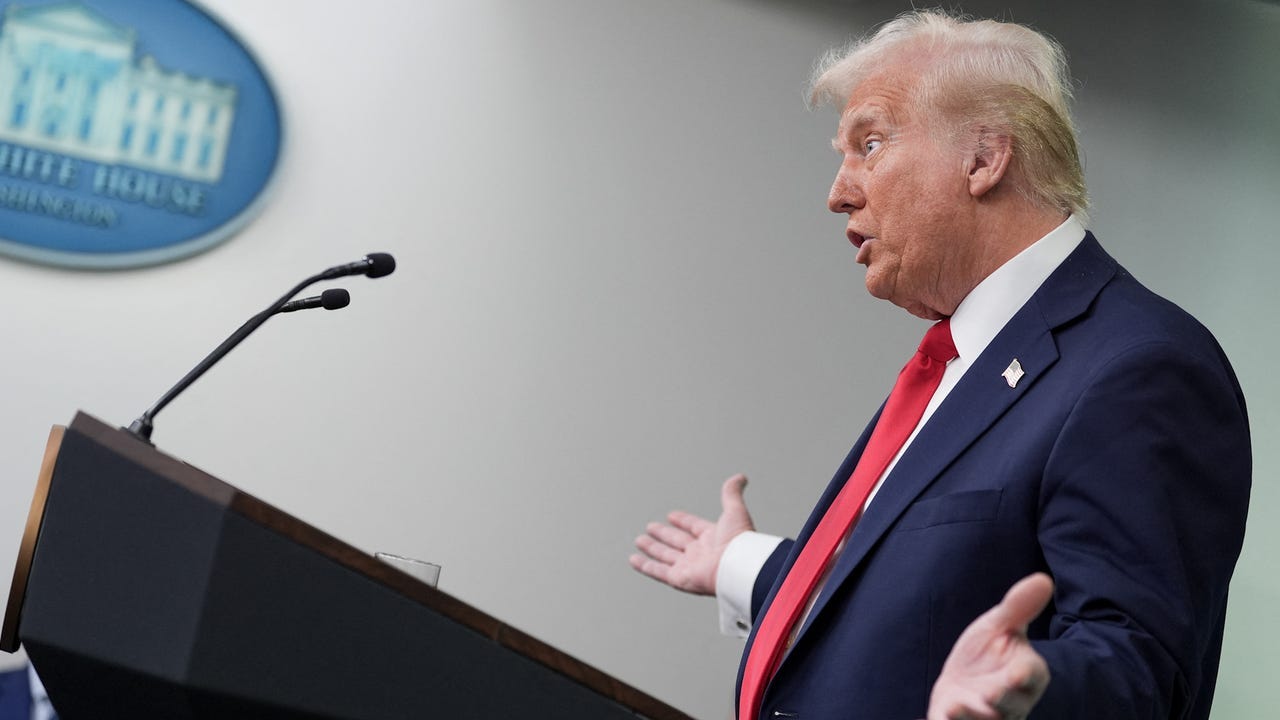Do we really "Wanna Go Back to Dixie?"
The return of racial politicking in the White House
Let me start with something. My guess is you’ve never heard this:
Tom Lehrer made a career out of satirizing bigotry, exposing its absurdity with sharp wit and pointed humor. One of my favorites is a song that openly mocks “da sowth” and its so-called "traditions." It was part of his schtick—he performed to packed theaters, delivering biting social commentary through music. Now, at the twilight of his life and career, he has chosen to release all of his works into the public domain, a final act of defiant generosity.
I have to admit, coming from “the North,” I was largely insulated from the kind of overt, casual bigotry that still lingers in certain parts of America. That changed when I moved to Virginia—the so-called "Old Dominion." There, I first heard the phrase “The War of Northern Aggression.” I was dumbfounded. The person who said it, a proud Southerner, was equally perplexed by my confusion (probably because I’m white?) My response?
"You mean the Civil War? The one where you all got your asses kicked, and the question of the Union was permanently settled when your states surrendered in unequivocal defeat? That war?"
I’m not always great at controlling my biases—or my temper.
Then, last week, President Trump stood at the podium and did something that should have shocked the nation but, at this point, barely registered as unusual: he blamed the American Airlines crash on “DEI.” A sitting U.S. president, once again, using racial grievance as a political tool, openly promoting intolerance under the guise of meritocracy.
We’ve had presidents with racist tendencies before. But in the last 156 years, presidential rhetoric has at least made some effort to mask overt bigotry—until now.
Trump has promised a “colorblind and merit-based” society while simultaneously equating diversity with incompetence. And in doing so, he is echoing another president whose legacy was consumed by racial politics—Andrew Johnson:
"This is a country for white men, and by God, as long as I am President, it shall be a government for white men."
Andrew Johnson, 17th President of the United States
Man of the People, Trump’s “spirit animal.”
Few American presidents have found themselves so wholly consumed by racial politics as Andrew Johnson and Donald Trump. Both men ascended to the presidency in moments of national fracture—Johnson after the assassination of Abraham Lincoln at the close of the Civil War and Trump in the wake of Barack Obama’s historic presidency amid rising racial and cultural tensions (the first time). Now again, after having been convicted of crimes, fomenting an insurrection, and overcoming all of it to ascend to the Presidency. In that second race, Trump faced as his opponent a black woman, making both race and gender central (if perhaps not so subtle) issues in the campaign.
Each saw race not as a peripheral issue but a tool for consolidating political support, a rhetorical bludgeon to wield against opponents, and, ultimately, a central pillar of their administration’s political identity. In the end, the reliance on racial grievance did not just define their presidencies—it helped lead to their political demise.
I believe it will likely do so again. The question is, how many people will pay a price?
Which begs me to ask - do we really “wanna go back to Dixie?”
I suspect not.
Johnson: The White Man’s President
Andrew Johnson inherited the highest office at a moment of crisis. The nation had just emerged from civil war, and the question of how to reconstruct the South—and whether newly freed Black Americans would be given full citizenship—was paramount. Johnson, a Southern Democrat who remained loyal to the Union, had long despised the Southern planter class, yet he despised Black Americans even more. His vision for Reconstruction was simple: restore the Union quickly, with little to no punishment for former Confederates, and ensure that the political power of white men remained intact.
Johnson made no effort to conceal his beliefs. His policies followed suit—he vetoed the Civil Rights Act of 1866, opposed the Fourteenth Amendment (which Lincoln had given his life in support), and gave free rein to ex-Confederates to reclaim power across the South. (Any of this sound familiar?) In response, Congress, dominated by the Radical Republicans (MAGA?1), took control of Reconstruction, imposing military oversight and passing laws to protect Black civil rights. Johnson fought back with open hostility, denouncing congressional Republicans in crude and often personal terms.
Johnson’s Racial Biases and Their Motives
Johnson was born into poverty in North Carolina and later moved to Tennessee, where he built his political career as a champion of the common white man. Unlike the Southern planter aristocracy, whom he deeply resented, Johnson identified with poor white farmers and laborers. His racism was not merely incidental but rather a defining ideology—he saw Black people as an obstacle to the social and political power of the white working class.
Several factors shaped his racial biases:
Economic Anxiety: Johnson, like many poor Southern whites, viewed Black Americans as economic competitors. He opposed giving freed slaves land or political power, believing that doing so would elevate them above poor whites.
Deep-Rooted White Supremacy: Johnson subscribed to the belief that the United States was fundamentally a country for white men. He saw racial hierarchy as natural and necessary for social order.
Political Calculation: By rejecting Black rights, Johnson sought to appeal to white voters across both the South and North who were uneasy about the rapid changes following the Civil War.
Johnson’s Presidency and Opposition to Reconstruction
After Lincoln’s assassination, Johnson initially reassured many in the North that he would be tough on former Confederates. However, he quickly pivoted toward leniency, arguing that the Southern states should be restored to the Union as quickly as possible with little federal oversight. This meant allowing former Confederate officials to regain power and systematically resisting attempts to grant rights to freed Black Americans.
Johnson vetoed key civil rights legislation, including the Civil Rights Act of 1866, which was designed to guarantee citizenship and equal protection under the law for Black Americans. He also opposed the Fourteenth Amendment, which granted citizenship to anyone born in the U.S., effectively ensuring that formerly enslaved people would be recognized as full citizens.
Perhaps most egregiously, Johnson actively encouraged Southern states to pass Black Codes—laws designed to maintain white supremacy by restricting the rights and freedoms of Black Americans. These laws criminalized Black unemployment, limited land ownership, and ensured that Black workers remained under the control of white landowners through exploitative labor contracts.
Why the Electorate Tolerated (and Supported) Johnson’s Racism
Despite his open hostility toward Black rights, a significant portion of the American electorate either tolerated or supported Johnson’s views. This was due to several overlapping factors:
Widespread Northern Racism: While the North had fought to end slavery, many white Northerners did not believe in racial equality. Even within the Republican Party, there were deep divisions about how much support should be extended to freed slaves.
Desire for National Unity: Many Americans, exhausted by the Civil War, wanted the country to reunite quickly. Johnson’s policies appealed to those who prioritized a swift reunion over justice for Black Americans.
Economic Concerns: White laborers, especially in the North and West, feared competition from newly freed Black workers. Johnson played into these fears by positioning himself as a defender of the working-class white man.
Opposition to Radical Republicans: The Radical Republicans, who led the charge for Black civil rights and Reconstruction, were seen by many as too extreme. Johnson positioned himself as a moderate who would prevent the “radicals” from going too far in reshaping the country.
The Backlash Against Johnson
Despite this initial support, Johnson’s extremism and unwillingness to compromise eventually led to his downfall. His open defiance of Congress, aggressive use of the veto, and inflammatory speeches attacking his opponents alienated even some of his allies.
Ultimately, Johnson’s belligerence led to his political undoing. His defiance of the Tenure of Office Act—by attempting to fire Secretary of War Edwin Stanton, a staunch defender of Reconstruction—triggered his impeachment. Though he narrowly avoided conviction, his impeachment in 1868 rendered him politically powerless. By the time he left office, Congress had effectively wrested control of Reconstruction from him, enacting policies that overruled many of his racist initiatives.
The Revival of White Identity Politics
Donald Trump’s presidency, more than a century later, bore striking similarities to Johnson’s in both rhetoric and impact. Like Johnson, Trump uses racial grievance as a defining feature of his political identity. His 2016 campaign was built on the foundation of white backlash—against immigration, against the Black Lives Matter movement, and against the broader cultural shifts that many of his supporters viewed as an erosion of traditional white American identity.
President Donald Trump, Lafayette Square, St. John's Episcopal Church, and Ashburton House, June 1, 2020
From the very beginning, Trump trafficked in racial demagoguery. He launched his campaign by declaring that Mexico was sending “rapists” and criminals across the border. As president, he infamously referred to African nations as “shithole countries,” implemented a Muslim travel ban, and defended white supremacist demonstrators in Charlottesville by claiming there were “very fine people on both sides.” His administration systematically dismantled civil rights protections, rolled back fair housing regulations, and stoked fears of “urban crime” in ways reminiscent of the racial politics of the Jim Crow era.
“Excuse me, they didn’t put themselves down as neo-Nazis, and you had some very bad people in that group. But you also had people that were very fine people on both sides. You had people in that group – excuse me, excuse me. I saw the same pictures as you did. You had people in that group that were there to protest the taking down, of to them, a very, very important statue and the renaming of a park from Robert E. Lee to another name.”
President Trump, remarks at a news conference on infrastructure at Trump Tower
August 15, 2017
Much like Johnson, Trump also found himself at war with Congress. His first term was defined by policies that disproportionately affected racial minorities—his hardline immigration measures, aggressive law-and-order rhetoric, and frequent attacks on movements advocating for racial justice cemented his reputation as a president who governed explicitly in the interests of white grievance politics. His public statements and executive orders reflected this stance: his administration enacted travel bans affecting Muslim-majority nations, pursued a border wall to halt migration from Latin America, and leveraged federal power to push back against diversity and inclusion initiatives.
Yet it was Trump’s final weeks in office—both in his first term and his currently unfolding second presidency—that solidified his historical legacy as a president driven by racialized politics. In the last days of his first term, he incited an insurrection at the U.S. Capitol, fueled by baseless claims that the election had been “stolen” from him. Much like Johnson’s resistance to Reconstruction, Trump’s refusal to accept the legitimacy of Black and minority voters in cities like Atlanta, Philadelphia, and Detroit was central to his challenge of the 2020 election results.
Now, in his second term, Trump’s return to power has been marked by sweeping executive orders rolling back diversity, equity, and inclusion efforts, reinstating bans on transgender service members in the military, and pushing nationalist policies that alienate minority communities. His public statements continue to stoke racial divisions while his administration actively dismantles federal programs designed to address racial disparities. Much like Johnson, Trump’s presidency has become synonymous with the idea of a “white man’s government.”
The Consequences of Racial Demagoguery
For both men, the use of racism as a governing strategy was not just morally bankrupt—it was politically ruinous. Johnson’s overt opposition to Black rights ensured that congressional Reconstruction would overshadow his presidency. At the same time, Trump’s weaponization of racial resentment helped turn the electorate against him in 2020, leading to his defeat and a lasting legacy of division.
Yet, their impacts persist. Johnson’s obstructionism allowed white supremacy to regain a foothold in the South, laying the foundation for Jim Crow. Trump’s presidency has emboldened far-right extremism and racial resentment and has created a Republican party that today looks nothing like the one from 2016, 2008, or 2000.
Trump’s aggressive rollback of Diversity, Equity, and Inclusion (DEI) policies is having profound ripple effects—not just on federal agencies and private companies but on the broader political and cultural landscape of the U.S. It’s more than a set of executive orders or policy changes; it’s an ideological crusade aimed at dismantling a framework that had, for better or worse, become deeply embedded in American institutions.
The Political and Cultural Message
Trump’s repeal of DEI policies isn’t just about changing hiring practices or eliminating diversity training programs—it’s about sending a clear message: The government will no longer prioritize racial or gender equity in decision-making. By stripping away DEI-focused regulations, the administration is signaling to corporate America, universities, and local governments that there is now political and legal cover to back away from diversity-related commitments without consequence.
This rollback is, at its core, a cultural war offensive. It plays directly into the grievances of a significant portion of his base who view DEI initiatives as mechanisms of forced ideological conformity, favoritism, or even reverse discrimination. Trump’s rhetoric—branding DEI efforts as divisive, wasteful, and harmful to American competitiveness—has been designed to galvanize opposition to policies that were once seen as routine components of workplace and institutional governance.
Impact on the Workforce and Federal Institutions
Q: Mr. President, on DEI and the claims that you've made, are you saying this crash was somehow caused and the result of diversity hiring? And what evidence have you seen to support these claims?
“It just could have been. We have a high standard, we've had a much higher standard than anybody else, and there are things where you have to go by brainpower, you have to go by psychological quality and psychological quality is a very important element of it. These are various, very powerful tests that we put to use and they were terminated by Biden, and Biden went by a standard that's the exact opposite. So we don't know.”
President Trump, Press Briefing, The White House, January 30, 2025
Inside federal agencies across the country, a quiet crisis is unfolding. Career employees, many with decades of service, are walking on eggshells. Hiring is stagnating. Morale is in free fall. The reason? President Trump’s full-scale rejection of diversity, equity, and inclusion (DEI) initiatives—a move that isn’t just ideological, but one that is actively hollowing out the effectiveness of the federal workforce.
When Trump returned to office, one of his first actions was dismantling DEI programs across government agencies. The justification? These initiatives were painted as "woke bureaucracy" and distractions from merit-based hiring. In reality, DEI programs have long served a far more practical function: ensuring that federal agencies attract, retain, and effectively utilize a workforce that reflects the diversity of the American public.
The immediate effects were swift.
At agencies like the Department of Education and the State Department, employees who had previously participated in DEI training were placed on administrative leave or faced internal scrutiny. Some offices saw budget cuts directly tied to diversity-focused programs, making it harder to recruit new employees from a broad range of backgrounds. These weren’t symbolic slashes—these were staffing shortages that left critical roles unfilled.
Worse still, the hiring freezes and resignations encouraged by Trump’s appointees—under the guise of reducing “waste”—led to the loss of institutional knowledge. Career professionals, many of whom had been through multiple administrations, were either forced out or left on their own, unwilling to work in an environment where inclusion efforts were labeled as ideological threats.
Nowhere has this been felt more than agencies relying on recruitment pipelines to bring in young talent. Programs designed to place minority students, veterans, and individuals with disabilities into federal careers were abruptly shuttered, leaving agencies struggling to replace an aging workforce. The government already faces a retirement wave, with nearly a third of federal employees eligible to leave in the next five years. By gutting DEI efforts, Trump has effectively closed the door on the next generation of public servants.
The consequences of this purge go beyond individual careers—they impact how the federal government serves the public. For example, the Department of Veterans Affairs has long benefited from initiatives aimed at hiring veterans and underrepresented groups who understand the challenges of those they serve. With these hiring pipelines dismantled, the agency faces delays in processing claims, providing healthcare, and addressing backlogs that disproportionately impact marginalized communities.
Similarly, Trump's policies at agencies like FEMA and the National Park Service have disrupted seasonal and emergency hiring efforts, disproportionately affecting communities that rely on these services. When disasters strike, it’s not political ideology that gets emergency teams on the ground—it’s having the right personnel in place. By discouraging a diverse applicant pool, the administration is not just making the government less inclusive—it’s making it less effective.
Critics of DEI may see this as a victory, but a less diverse federal workforce is a less competent one. Public service depends on understanding the needs of all Americans, not just a select few. When the government’s workforce doesn’t reflect the population it serves, blind spots become policy failures—from disaster response to healthcare access to veterans’ services.
For years, DEI programs in the federal government have been less about ideology and more about practicality. They ensure that agencies can recruit top talent, avoid discrimination lawsuits, and create environments where employees are judged on their contributions rather than outdated biases. By dismantling these efforts, Trump’s administration isn’t making the government more efficient. It’s gutting its ability to function at all.
If Congress doesn’t restore hiring initiatives and workforce protections, the damage will not only affect today’s federal workforce but also for generations as the pipeline of diverse, skilled professionals who would have served their country is replaced by an aging, shrinking, and increasingly disconnected bureaucracy.
And that’s a crisis no amount of rhetoric about “merit” can fix.
‘Meritocracy’ or a Cover for Bias?
Trump and his allies argue that these policies were always unfair and that rolling them back restores a “merit-based” system. However, meritocracy is often a convenient shield for preserving existing racial and economic hierarchies. Eliminating DEI programs doesn’t mean discrimination goes away—it just means institutions are less accountable for addressing it.
If history is any guide, these rollbacks won’t just disappear quietly. The reactionary push against DEI will provoke counter-resistance, particularly in industries that have seen tangible benefits from diversity initiatives. But in the short term, the effects are clear: fewer checks on systemic inequality, fewer protections for marginalized communities, and a return to the quiet, implicit biases that DEI programs, however imperfectly, were meant to combat.
This is not just an administrative shift—it’s a fundamental reshaping of the values that define workplace culture, government policy, and the rules of economic mobility in America.
The Impact Trump is Having on America
The consequences of Trump’s second-term anti-DEI policies are already reverberating across the country. His administration’s push to dismantle diversity initiatives has not only affected government agencies but also sent shockwaves through corporate America, the legal system, and the broader cultural landscape. The message from the White House is clear: diversity efforts are under attack, and institutions that continue to promote them are now facing political and legal consequences.
Federal Government: A Purge of DEI and Equity Initiatives
At the federal level, Trump’s executive orders have resulted in the dissolution of DEI offices, the reassignment or termination of civil servants working on racial equity, and a return to what his administration calls a “colorblind” approach. But this isn’t just about hiring practices—it’s about an ideological shift in how government agencies operate.
Senator Tim Kaine (D-VA) reacted sharply when Trump blamed DEI hiring practices for the recent American Airlines crash, calling the statement "reckless, baseless, and a transparent attempt to shift blame." Kaine pointed out that Trump’s real goal is to create a pretext for further dismantling workplace diversity protections.
Senator Mark Kelly (D-AZ), himself a former astronaut and Navy pilot, criticized Trump's comments as “a dangerous politicization of a tragedy.” He noted that Trump’s administration has been systematically removing DEI efforts across the federal government, not for reasons of efficiency or safety, but as part of a broader culture war.
NAACP President Derrick Johnson condemned the administration’s aggressive rollback of equity programs, saying, “This isn’t about efficiency, and it’s not about so-called ‘merit.’ This is about turning back the clock. The Trump administration is working to undo decades of civil rights progress, and they are using executive power to do it.”
The chilling effect on federal employees has been profound. Reports indicate that agencies have internally advised staff to stop using terms like ‘equity’ and ‘inclusion’ in official documents to avoid political scrutiny. Employees working on DEI-related initiatives have either been reassigned or warned to "stay low-profile." In short, this is a government-wide purge of policies that were designed to address racial and economic disparities.
Corporate America: Backtracking or Holding the Line?
Trump’s anti-DEI policies are influencing the government and directly impacting corporate America. Many companies that previously championed diversity initiatives are now rethinking their commitments in the face of political and legal challenges.
Some corporations, under pressure from Republican state attorneys general and right-wing shareholders, are scaling back or eliminating DEI programs altogether:
McDonald’s, Meta, and Target have either cut or significantly reduced their DEI offices. This isn’t just a policy shift—it’s an attempt to insulate themselves from lawsuits and GOP-led legal challenges that have cast DEI programs as discriminatory against white workers.
Republican Attorneys General from 19 States, led by Texas AG Ken Paxton and Iowa AG Brenna Bird, have directly pressured businesses like Costco to abandon their diversity policies or risk legal action. These officials argue that any corporate policy prioritizing racial equity violates anti-discrimination laws and should be repealed.
NFL Commissioner Roger Goodell addressing reporters on a number of league topics on Monday, February 3, 2025 -- including its diversity, equity and inclusion programs, the state of officiating, and a potential 18-game schedule.
Other companies, however, are standing firm against the political pressure:
Costco’s Board of Directors defended its diversity hiring efforts, arguing that “DEI initiatives are not about exclusion—they are about ensuring we attract and retain the best talent.” The board rejected demands to roll back these programs despite legal threats.
NFL Commissioner Roger Goodell took a strong public stance, stating that the league will not abandon its diversity programs despite Trump’s opposition. “The numbers show that diversity makes us stronger,” Goodell said, emphasizing that DEI efforts have been key to improving representation in coaching and leadership roles.
What’s emerging is a divided corporate landscape—some companies are backing away from DEI to avoid legal battles, while others are standing their ground, refusing to let the government dictate their diversity policies.
A New Era of White Grievance Politics
Beyond the immediate policy changes, Trump’s anti-DEI campaign is intensifying racial and cultural divisions. His administration’s rhetoric—equating diversity with incompetence—has emboldened reactionary forces who see DEI efforts as an existential threat to traditional white power structures.
The legal landscape is already shifting:
Lawsuits targeting university DEI policies are increasing, particularly after the Supreme Court’s decision to gut affirmative action. The University of California system is currently facing a lawsuit alleging illegal use of racial preferences in admissions, a case that could set a national precedent.
State governments are following Trump’s agenda. Florida, Texas, and Georgia have already enacted state-level bans on DEI programs in public universities and government agencies. This means that even if Trump is removed from office, the infrastructure for his anti-DEI campaign will remain.
Meanwhile, Trump’s statements continue to fuel racial paranoia:
His blame of the American Airlines crash on DEI has been widely condemned as an attempt to fabricate a crisis that justifies dismantling diversity hiring programs in aviation and beyond.
His resumption of the “America First” hiring agenda means that DEI will likely be further targeted across every federal agency, from education to law enforcement.
While Trump’s policies have given white grievance politics a new platform, the backlash is also growing. Legal experts warn that stripping away DEI programs won’t erase discrimination, making it harder to fight. Civil rights groups are already mobilizing to challenge these rollbacks, and corporate leaders are bracing for long-term reputational risks if they wholly abandon diversity initiatives.
Do We Wanna Go Back to Dixie?
The question before us is stark: Are we willing to slide back into a racial hierarchy reminiscent of 1865, or do we choose to move forward? The parallels between Andrew Johnson’s obstruction of Reconstruction and Trump’s systematic dismantling of diversity initiatives are not coincidences—they echo the same reactionary impulse, the same fear of an America where power is shared rather than hoarded.
For Johnson, preserving a "white man's government" meant undoing the sacrifices of the Civil War and ensuring that Black Americans remained second-class citizens. For Trump, it has meant leveraging executive power to strip protections, stoke resentment, and push a political movement built on nostalgia for a past where diversity was invisible and inequality was unquestioned.
But history tells us something important: reactionary politics may delay progress, but they do not erase the momentum of justice. Johnson was ultimately cast aside, his vision of white supremacy momentarily overridden by congressional Reconstruction. Trump’s legacy is still being written, but the backlash against his second-term policies—legal challenges, corporate resistance, and grassroots activism—suggests that his efforts to turn back the clock will not go unchallenged.
Still, resistance alone is not enough. If America is to avoid going "back to Dixie," it must do more than reject Trump’s policies; it must actively reaffirm the principles that DEI initiatives, civil rights movements, and democratic institutions were designed to uphold. That means confronting systemic inequalities, protecting voting rights, and refusing to let reactionary politics define the national agenda.
The choice is in front of us: Do we uphold the multiracial democracy that so many have fought for, or do we allow the specter of white grievance to drag us backward into the past? Johnson’s presidency was a warning. Trump’s second term is a test.
So, I’ll leave you with one last song:
Whether we embrace progress or repeat the mistakes of history, the outcome remains up to us.
(I’ve made my choice. The Union Forever! Down with the Traitors! Up with the Star!)
The Radical Republicans aren’t who you think they are. When I first drafted this article, I put “MAGA?” in parentheses, drawing a parallel between how the Radical Republicans started and what MAGA Republicans have become—from a revolutionary force to, essentially, seditionists.
In 1860, the Radical Republicans were a faction of the Republican Party united in their opposition to slavery. Led by Thaddeus Stevens in the House and Charles Sumner in the Senate (yes, that Sumner—the one nearly beaten to death by Preston Brooks in 1856), their goal was to secure emancipation and civil rights for Black Americans during and after the Civil War.
They were instrumental in passing the 14th Amendment (1867) and ensuring that the Confederacy faced consequences for its rebellion. But by the 1870s, their influence had faded. The Union was restored, Reconstruction was deemed “complete” by many, and even Sumner distanced himself, believing the Radical Republicans had achieved their mission. By the mid-1870s, the faction had effectively disbanded.
Whether MAGA Republicans meet the same fate remains to be seen. Right now, it’s hard to imagine—they dominate the GOP, and their loyalty to Trump seems unshakable. But history suggests movements like this don’t last forever.
If Trump follows Johnson’s trajectory—and so far, he is—then his economic and political decisions may eventually cause real political pain for MAGA Republicans. His plans to cut Social Security, gut student aid, and dismantle programs that working-class voters rely on could turn his own base against him.
Congress turned on Johnson when his chaos became unsustainable. MAGA Republicans may face the same reckoning—especially with every House seat and a third of the Senate up for grabs in 20 months. Polling already shows cracks in MAGA’s grip on its own voters. If Trump’s behavior continues to be erratic and his policies create enough backlash, the party might abandon him out of self-preservation.
Right now, that seems unlikely—their appetite for blind loyalty appears limitless. But history suggests even the most zealous movements eventually collapse under their own weight.


